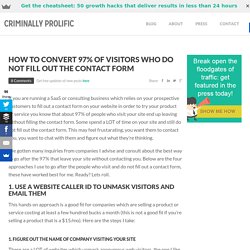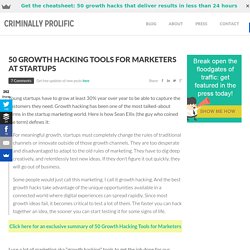

Digital corsaire – Growth-hacking — Digital Corsaire – Agence Growth-Hacking. Article sans liens sponsorisés Cette page est une première d’une série sur les meilleurs outils et ressources web que tout entrepreneur devrait connaître pour améliorer son site web et sa stratégie marketing.

Aujourd’hui, nous nous attardons sur les outils qui permettent de comprendre et analyser le trafic de votre site. Évidemment, Google Analytics est la référence en ce domaine. On ne présente plus cet outil. Mais dans bien des cas Google analytics ne suffit pas à comprendre le comportement de votre audience sur votre site. Le paramétrage de vos dashboard et de vos segments peuvent vite devenir chronophage. Pour quoi faire ? Comme vous le verrais, les informations fournies par ses outils sont précieuses. Outils de tracking analytique Ces outils sont donc indispensables à tout ceux qui veulent améliorer leur trafic et la retention de leur site.
Heapanalitics : Vous n’êtes pas à l’aise avec le code, heapanalytics permet de poser des trackers facilement sur votre site. Popcornmetric : Growth Hacking: L'intersection entre le produit, la donnée et le marketing. (with images, tweets) · WSFparis. How to Convert 97% of Visitors Who Do Not Fill Out The Contact Form. If you are running a SaaS or consulting business which relies on your prospective customers to fill out a contact form on your website in order to try your product or service you know that about 97% of people who visit your site end up leaving without filling the contact form.

Some spend a LOT of time on your site and still do not fill out the contact form. This may feel frustarating, you want them to contact you, you want to chat with them and figure out what they’re thinking. I’ve gotten many inquiries from companies I advise and consult about the best way to go after the 97% that leave your site without contacting you. Below are the four approaches I use to go after the people who visit and do not fill out a contact form, these have worked best for me. Ready? This hands on approach is a good fit for companies which are selling a product or service costing at least a few hundred bucks a month (this is not a good fit if you’re selling a product that is a $15/mo). 1. 2. 3. 50 Growth Hacking Tools for Marketers At Startups. Young startups have to grow at least 30% year over year to be able to capture the customers they need.

Growth hacking has been one of the most talked-about terms in the startup marketing world. Here is how Sean Ellis (the guy who coined the term) defines it: For meaningful growth, startups must completely change the rules of traditional channels or innovate outside of those growth channels. They are too desperate and disadvantaged to adapt to the old rules of marketing. They have to dig deep creatively, and relentlessly test new ideas. I use a lot of marketing aka “growth hacking” tools to get the job done for our clients and we actually keep a little library of all the tools we like to use and the ones we still need to check out. 1. Outbrain lets you promote your blog post or article in ‘From Around the Web’ sections of CNN, FastCompany, Slate, Time and tens of millions of other websites. Pricing: $10 minimum a day, 35 cents a click is recommended 2. Pricing: Free 3. 4. 5. 6. 7. 8. 9. How I Sold My App To 10 People Before I Wrote a Line of Code And Then Launched It.
How many of you have seen this in your Google Analytics dashboard?

Isn’t it depressing? If you’re reading my blog I’m sure you’ve seen this, you’ve felt the excitement of launching a product and the disappointment a day after when you lose all that traffic following the launch and you’re back to where you started. I’ve been there myself. I remember launching an app six years ago, I was clueless about marketing back then, we spent three months building the product and when it was ready to launch the job fell on me to launch it and get our first customers. I did what most startups do, about a week before the launch I blasted 100 reporters at TechCrunch, Mashable, VentureBeat, TheNextWeb, and a bunch of other publications with a pretty generic email about our launch and why our tool is the best thing since sliced bread.
First of all I was not the founder of ZURB, second of all the company was ZURB and not URB, and finally the product we were launching was by no means “a memory game” 1.)